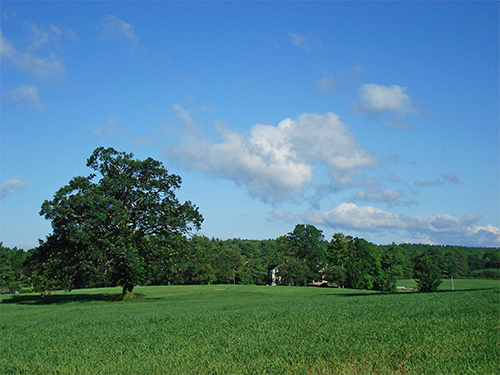Stickney Hill Historic Agricultural Neighborhood

Three Five Rivers conserved properties make up the majority of the “Stickney Hill Agricultural Neighborhood,” as defined by a 2008 report by New Hampshire Division of Historical Resources for the Concord Heritage Commission. The report states the neighborhood retains “an exceptionally high degree of integrity of location, design, materials, setting, workmanship, feeling, and association.”
The “Stickney Hill Agricultural Neighborhood” encompasses both sides of Stickney Hill Road, from a short distance southwest of Exit 3 off I-89 to the Hopkinton town line. As it passes through the heart of the neighborhood, the road follows the high point, with extensive open fields on either side. The district includes six former or current farmhouses, many of which retain historic outbuildings and extensive acreage, fields, pasture, woods, rail fences, and stone walls — plus a former district schoolhouse.
Stickney Hill was first settled by Jonathan Stickney (1739-92). It remained a major dairy farming area well into the 20th century.
It is very unusual to have such an intact historical agricultural area, especially one within the city limits of a major city. The neighborhood has been a conservation priority, in part because it provides a unique window into the City’s agrarian roots.
In 2012 Five Rivers Conservation Trust and the City of Concord purchased a conservation easement on Maplewood Farm. In 2013 Hope Butterworth donated a conservation easement on her farm, with acreage on Stickney Hill in Concord and in the town of Hopkinton.
And in 2016, Five Rivers conserved the Pierce farm. It is very visible in the center of the agricultural fields and was the last, critical piece to be protected.
Click here to view maps, images, and a detailed field survey of the Stickney Hill Agricultural Neighborhood from the New Hampshire Division of Historical Resources for the Concord Heritage Commission(PDF).



